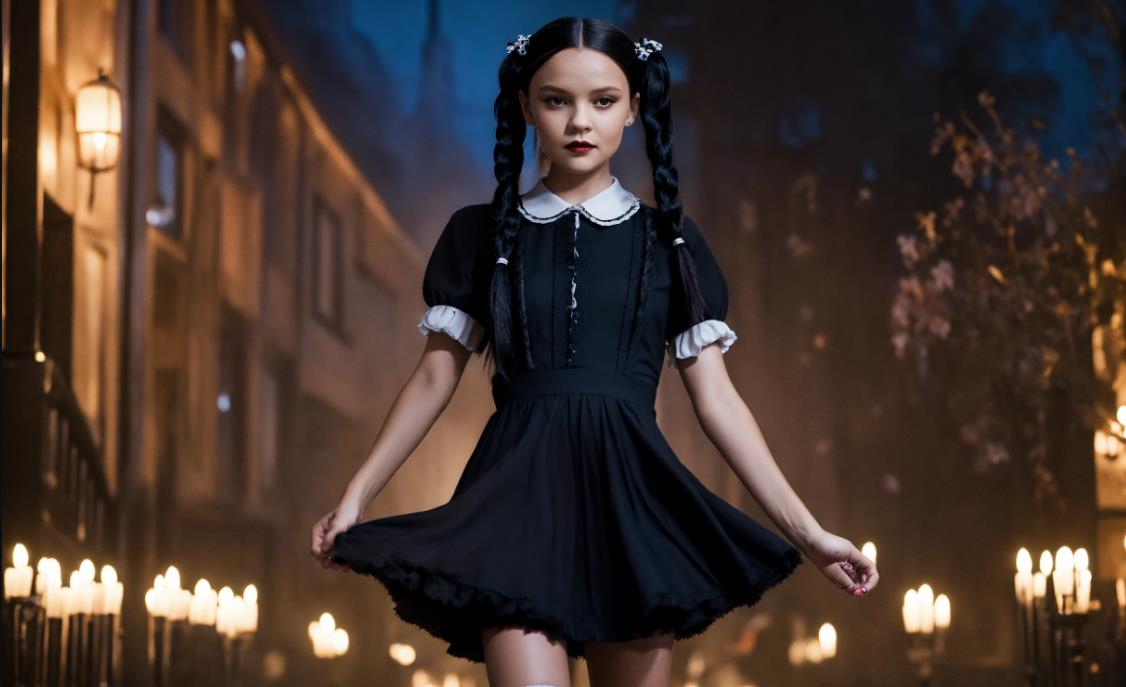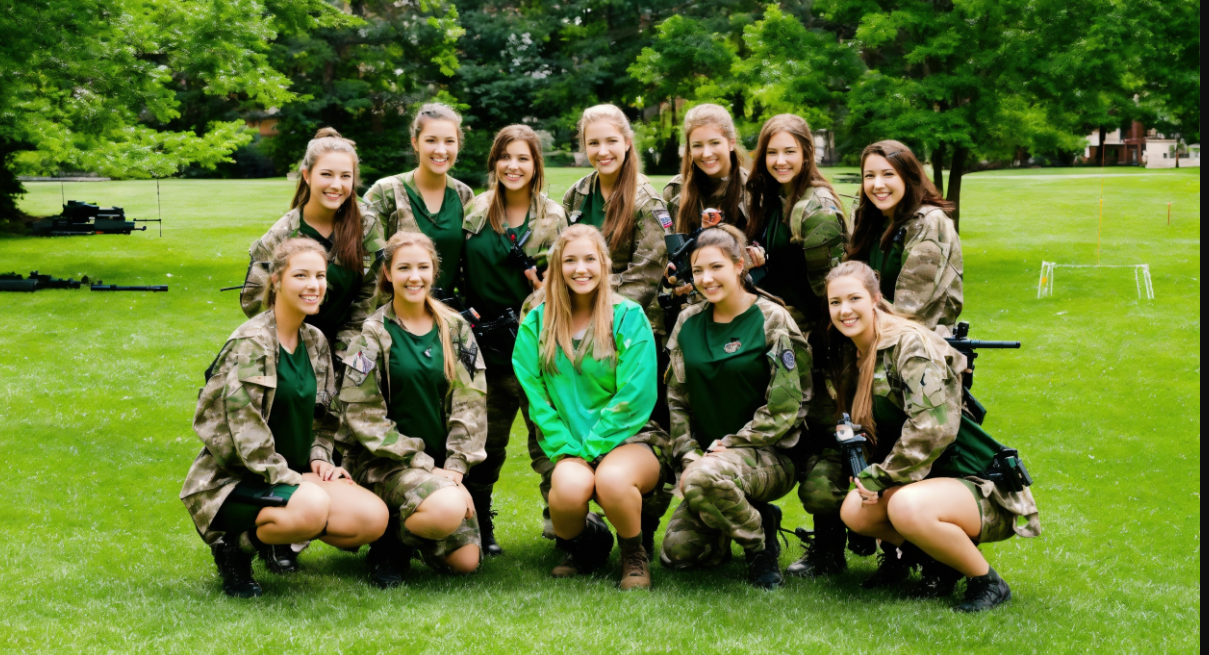The medieval dresses period (5th–15th century) was a time of remarkable fashion evolution, where clothing was not only practical but also a symbol of status, occupation, and identity. Whether you’re looking for an authentic medieval dress for a Renaissance fair, cosplay, historical reenactment, or LARP (Live Action Role Play), the right medieval outfit can transport you back in time.
This guide explores 16 iconic medieval dresses, each with historical insights, key features, materials, accessories, and styling tips to help you craft an authentic medieval look.
The Regal Queen’s Gown Medieval Dresses

The queen’s gown was the pinnacle of luxury and power in medieval fashion. Reserved for monarchs and noblewomen, these gowns were crafted from velvet, silk, and brocade, adorned with gold embroidery, pearls, and precious stones.
Key Features Medieval Dresses:
- Materials: Velvet, silk, brocade
- Design: Fitted bodice, full skirts, elaborate train
- Accessories: Crown, tiara, golden belt, ornate rings
- Color Palette: Deep reds, royal blues, gold, emerald green
- Historical Inspiration: Eleanor of Aquitaine, known for her luxurious wardrobe
Styling Tip Medieval Dresses:
Wear a jeweled crown and a floor-length cloak lined with ermine for a royal presence.
The Noble Lady’s Dress

A noblewoman’s dress reflected her wealth and status. The sideless surcoat, worn over a kirtle, became popular among medieval aristocrats, often showcasing a heraldic design to represent family lineage.
Key Features:
- Materials: Brocade, damask, fine linen
- Design: Sideless surcoat over an elegant kirtle
- Accessories: Pendant necklaces, embroidered veils
- Color Palette: Soft pastels, white, silver, gold
- Historical Inspiration: Isabella of France, wife of Edward II
Styling Tip:
Drape a silk veil with delicate embroidery over your head for an authentic medieval courtly look.
The Enchanting Sorceress Costume Medieval Dresses

Inspired by medieval dresses folklore and fantasy, the sorceress dress features mystical designs like celestial motifs and deep, flowing sleeves.
Key Features:
- Materials: Velvet, lace, chiffon
- Design: Floor-length gown with bell sleeves and intricate embroidery
- Accessories: Hooded cloak, spellbook, amulets, staff
- Color Palette: Black, deep purple, midnight blue
- Historical Inspiration: Morgana le Fay from Arthurian legends
Styling Tip:
Choose a crescent-moon necklace and a dark velvet cloak to enhance the mystical aesthetic.
The Warrior Maiden’s Dress

Inspired by Joan of Arc, this look blends femininity with military attire. Women who fought in battle often wore modified dresses with chainmail or leather elements.
Key Features:
- Materials: Leather, chain mail, wool
- Design: Tunic over leggings, fitted bodice, metal bracers
- Accessories: Sword, shield, gauntlets
- Color Palette: Steel gray, brown, deep red
- Historical Inspiration: Joan of Arc, the iconic French warrior
Styling Tip:
Layer a chainmail vest over a woolen tunic for a battle-ready look.
The Lady-in-Waiting Dress

Ladies-in-waiting served noblewomen, wearing elegant but modest gowns suited for medieval dresses courtly duties.
Key Features:
- Materials: Fine linen, wool
- Design: Long, flowing sleeves, fitted bodice
- Accessories: Simple headpiece, leather belt
- Color Palette: Earthy tones, soft blues, muted greens
- Historical Inspiration: Anne Boleyn before becoming queen
Styling Tip:
Add an embroidered belt for a sophisticated medieval court style.
The Crusader’s Wife Dress

The wives of Crusaders often wore practical yet elegant gowns embroidered with family crests medieval dresses medieval dresses.
Key Features Medieval Dresses:
- Materials: Wool, linen
- Design: Loose-fitting tunic, heraldic embroidery
- Accessories: Veil, belt, embroidered gloves
- Color Palette: Red, white, blue (Crusader colors)
- Historical Inspiration: Matilda of Tuscany, a supporter of the Crusades
Styling Tip Medieval Dresses:
Choose a dress with a heraldic emblem to represent a Crusader knight’s family.
The Wise Herbalist Dress

Herbalists and healers wore simple, functional garments that allowed freedom of movement.
Key Features:
- Materials: Wool, linen
- Design: Long tunic with apron overlay
- Accessories: Herb pouches, wooden staff, mortar & pestle
- Color Palette: Brown, green, beige
- Historical Inspiration: Hildegard of Bingen, medieval herbalist and nun
Styling Tip Medieval Dresses:
Carry a pouch of dried herbs and wear a hooded cloak for an authentic healer’s look.
The Court Jester Costume Medieval Dresses

Jesters wore bright, mismatched outfits with bells and playful designs to entertain royalty.
Key Features:
- Materials: Wool, silk
- Design: Split-colored tunic, fitted leggings, bells
- Accessories: Jester hat, wooden flute
- Color Palette: Bright reds, yellows, blues
- Historical Inspiration: Will Sommers, Henry VIII’s court jester
Styling Tip:
Choose a color-blocked tunic with bell-trimmed sleeves for authenticity.
The Archer’s Tunic Medieval Dresses

Archers needed flexible tunics for mobility, often worn with a quiver of arrows.
Key Features:
- Materials: Wool, leather
- Design: Mid-thigh tunic with belt
- Accessories: Bow, quiver, gloves
- Color Palette: Green, brown
- Historical Inspiration: Robin Hood
Styling Tip:
Wear a green hooded cloak for the classic outlaw archer look.
Certainly! Here’s the remaining seven medieval dresses, complete with detailed information and a chart that summarizes each outfit’s features.
The Mysterious Plague Doctor Costume Medieval Dresses

In the medieval period, the plague doctor was a figure dressed in a distinctive and eerie outfit. These doctors wore long cloaks with leather gloves and beaked masks, a fashion that was believed to protect them from contagion during the Black Death.
Key Features:
- Materials: Leather, waxed fabric, glass (for lenses), cotton
- Design: Long coat with a beaked mask, gloves, and boots
- Accessories: Walking stick, surgical tools, plague mask
- Color Palette: Black, brown, dark colors to conceal stains
- Historical Inspiration: Plague Doctors from the Black Death era (14th–17th century)
Styling Tip:
To create an authentic plague doctor look, wear a dark leather long coat and use a beaked mask made from leather or paper mache. The mask often had glass eye holes for protection.
The Hardworking Blacksmith Attire Medieval Dresses

Blacksmiths were essential to medieval life, forging weapons, tools, and armor. Their attire needed to be durable, practical, and able to withstand the heat of the forge.
Key Features:
- Materials: Leather, heavy wool, cotton
- Design: Fitted tunic, sturdy pants, and apron
- Accessories: Hammer, anvil, tongs
- Color Palette: Brown, gray, black
- Historical Inspiration: Blacksmiths who worked with metals during the medieval period.
Styling Tip:
Pair a leather apron over a fitted tunic and include a belt with pouches to hold your tools. For a true blacksmith look, carry a hammer or tongs.
The Traveling Minstrel Outfit

Minstrels were traveling musicians and entertainers, often wearing colorful outfits that reflected their role in society. They were known for entertaining at courts, performing songs, and telling tales.
Key Features:
- Materials: Linen, wool, cotton
- Design: Loose tunic, trousers, vest, and flowing sleeves
- Accessories: Lute, musical instrument, hat, gloves
- Color Palette: Bright colors like red, yellow, green
- Historical Inspiration: Minstrels and bards of medieval Europe.
Styling Tip:
Add a musical instrument like a lute or mandolin to your outfit. You can also wear a feathered cap for extra flair.
The Noble Falconer Outfit

Falconers were royal hunters in the medieval period, responsible for training and flying birds of prey. Their outfits often included leather gloves for handling the birds and light, functional clothing suited for movement.
Key Features:
- Materials: Leather, wool, linen
- Design: Tunic, breeches, gloves for bird handling
- Accessories: Falcon, leather gloves, hunting horn
- Color Palette: Brown, tan, green
- Historical Inspiration: Medieval nobility who practiced falconry, such as King Henry II.
Styling Tip:
Use a leather falconer’s glove and bring a bird prop to complete the look. Wear earth-toned colors that match the natural surroundings.
The Industrious Scribe or Illuminator Dress

Medieval scribes and illuminators were responsible for copying texts and creating beautifully decorated manuscripts. Their attire was simple but practical, designed for long hours of writing.
Key Features:
- Materials: Linen, wool
- Design: Simple tunic with a belt and pouch for writing tools
- Accessories: Quill, parchment, ink pot
- Color Palette: Off-white, beige, soft browns
- Historical Inspiration: Medieval scribes and monks in monasteries.
Styling Tip:
Carry a scroll or parchment and a quill pen to complete the look. You can also decorate the edges of your tunic with subtle embroidery to represent the work of an illuminator.
The Cunning Alchemist’s Outfit

Alchemists were thought to have the secret knowledge of turning base metals into gold and discovering the elixir of life. Their outfits were often richly adorned, showing their mystical and scientific pursuits.
Key Features Medieval Dresses:
- Materials: Velvet, silk, leather
- Design: Flowing robe with intricate designs, wide sleeves
- Accessories: Alchemical symbols, flask, vials of liquid
- Color Palette: Dark purple, gold, silver
- Historical Inspiration: Alchemists of the medieval period like Roger Bacon.
Styling Tip Medieval Dresses:
Add alchemy symbols to your robe for extra mystical appeal. Gold jewelry and vials of liquid will give you an authentic alchemist look.
The Dashing Robin Hood Outfit Medieval Dresses

Inspired by Robin Hood, this outfit features a practical tunic for a noble outlaw. Robin Hood’s style is centered around freedom, with earth-toned colors reflecting his life in Sherwood Forest.
Key Features Medieval Dresses:
- Materials: Wool, leather, linen
- Design: Tunic, hooded cloak, fitted trousers
- Accessories: Bow and arrows, quiver, dagger
- Color Palette: Green, brown, black
- Historical Inspiration: Robin Hood, the legendary outlaw.
Styling Tip Medieval Dresses:
Wear a green tunic with a brown belt and add a quiver of arrows to complete the Robin Hood look.
Medieval Dress Summary Chart
| Dress Type | Fabric Used | Accessories | Key Colors | Historical Example |
|---|---|---|---|---|
| Plague Doctor Costume | Leather, cotton | Beaked mask, walking stick | Black, brown | Plague Doctors of 14th century |
| Blacksmith Attire | Leather, wool | Hammer, anvil, tongs | Brown, black | Medieval blacksmiths |
| Traveling Minstrel | Linen, wool | Lute, musical instruments | Red, yellow | Medieval minstrels |
| Falconer Outfit | Leather, wool | Falcon, gloves | Brown, green | Royal falconers |
| Scribe / Illuminator | Linen, wool | Quill, parchment | Off-white, beige | Medieval scribes |
| Alchemist Outfit | Velvet, silk | Flask, alchemical symbols | Dark purple, gold | Medieval alchemists |
| Robin Hood Outfit | Wool, leather | Bow, arrows, quiver | Green, brown | Robin Hood, English outlaw |
Conclusion
Medieval dresses represent more than just clothing — they tell stories of culture, power, occupation, and identity. From the regal queen’s gown to the mysterious plague doctor costume, these outfits carry with them the history and heritage of the Middle Ages.
Whether you’re participating in medieval reenactments, a Renaissance fair, or just want to embody the spirit of the medieval period, the right dress will help you step back in time.
Now that you have an understanding of 16 different medieval dresses, you can confidently choose the perfect outfit for your next historical cosplay, medieval event, or themed celebration.




